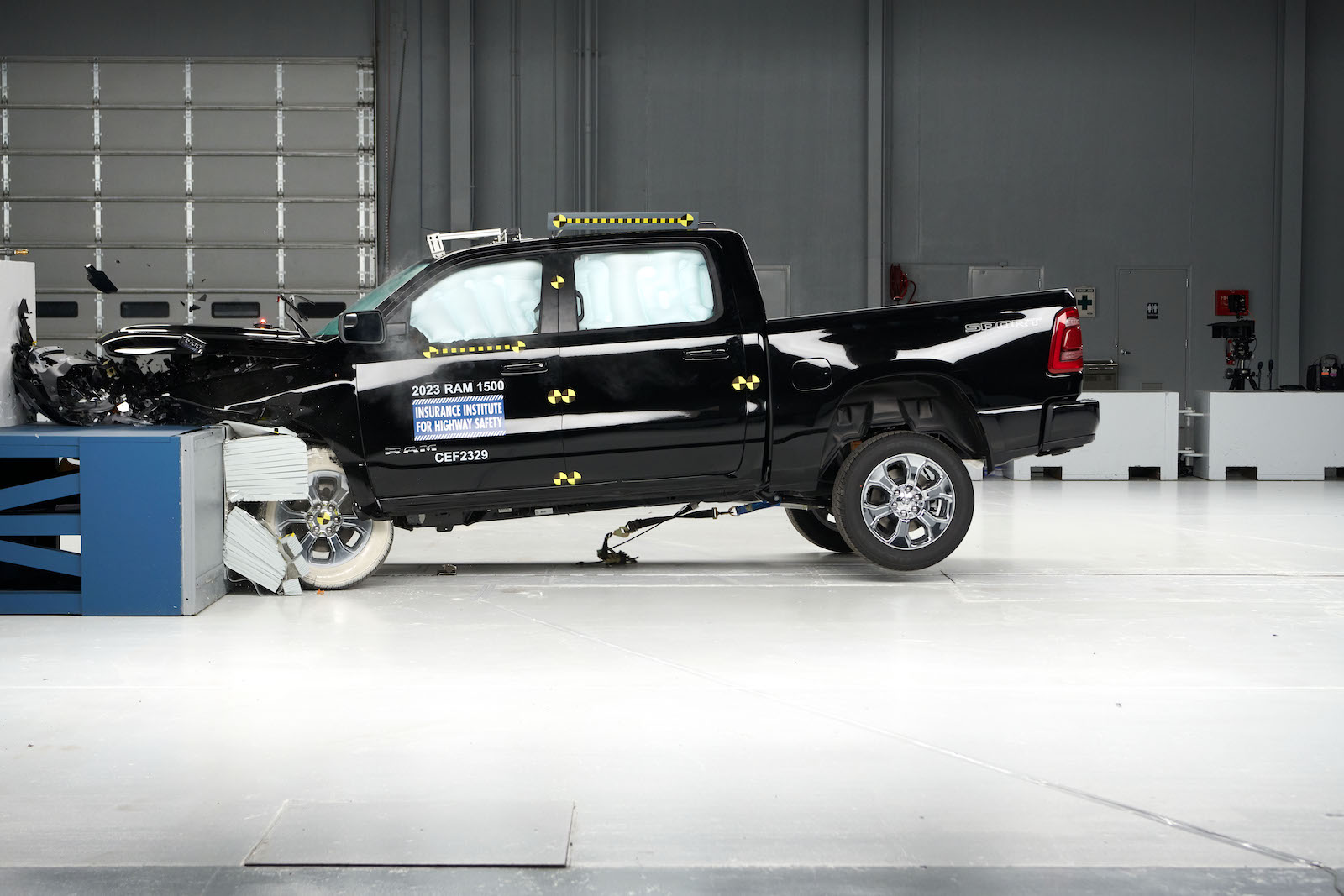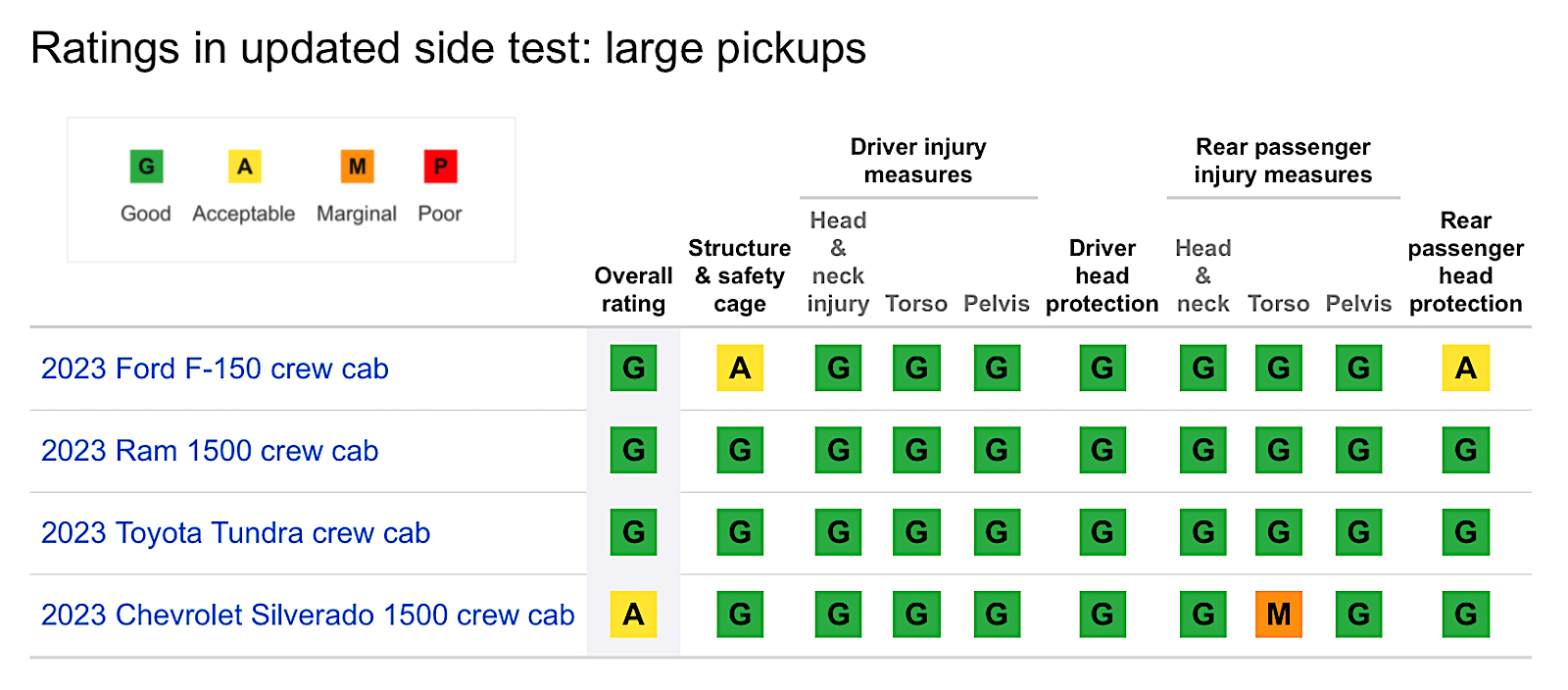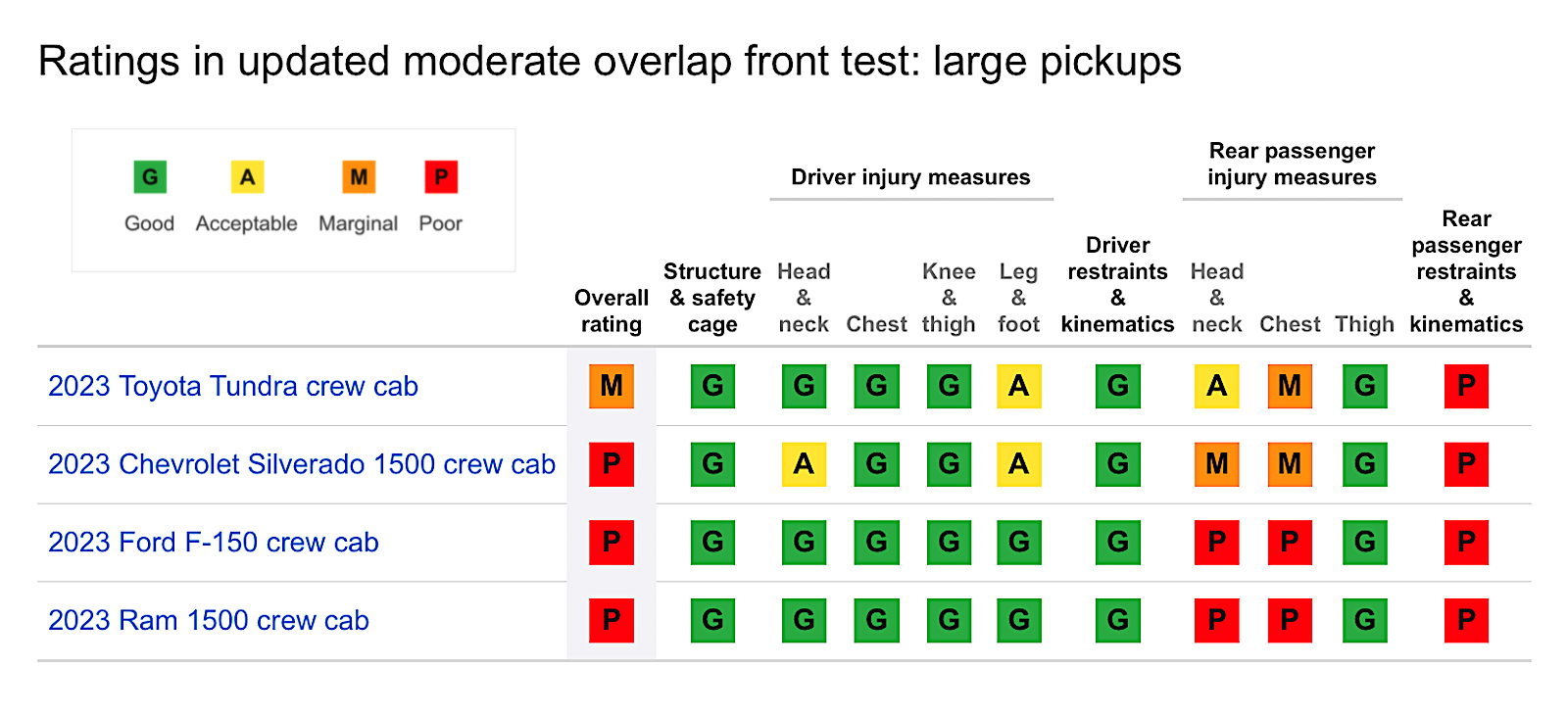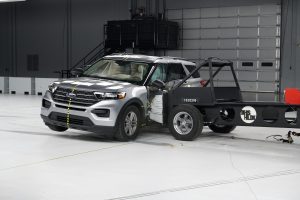Full-size pickups dominate new vehicle sales in the U.S., carrying the top three spots. One of the reasons they’re popular is because of their size and the perception of safety that comes with their enormity. However, a new safety test from the Insurance Institute of Highway Safety shows back seat passengers aren’t as safe as they could be in the massive trucks.

The new safety test from the IIHS shows back seat passengers aren’t as safe as they could be in the full-size trucks.
When it comes to vehicle safety, it’s tough to do much better than a full-size pickup truck, but new testing from the Insurance Institute for Highway Safety says back seat passengers are vulnerable.
The organization, which performs tests on scores of new vehicles each year, says the 2023 versions of the Ram 1500 crew cab, Ford F-150 crew cab and Toyota Tundra crew cab earned good ratings in the IIHS updated side crash test, while the 2023 Chevrolet Silverado 1500 crew cab is rated acceptable.
However, as time moves on so too do safety standards. The group began using a new moderate overlap front crash test on vehicles, and on this one, the results are not good. The current results show only the Tundra finished with a marginal rating. The F-150, Ram 1500 and Silverado rated poor.
“Like most other vehicle classes, large pickups don’t perform as well in the new moderate overlap evaluation as they do in the updated side test, which is now a requirement for our Top Safety Pick awards,” said IIHS President David Harkey in a statement.
Why the new test?
Research showed that back seat passengers are at higher risk for sustaining a fatal injury despite decades of efforts by automakers and regulators to make vehicles safer. In order to check how new vehicles are performing in these situations, the IIHS developed the moderate overlap front crash test on vehicles.
In the updated test, a second dummy is positioned in the second row behind the driver. The driver dummy is the size of an average adult man. The rear dummy is the size of a small woman or 12-year-old child. IIHS researchers also developed new metrics that focus on the injuries most frequently seen in back seat passengers.
For a vehicle to earn a good rating, there can’t be an excessive risk of injury to the head, neck, chest or thigh, as recorded by the second-row dummy. The dummy should remain correctly positioned during the crash without “submarining,” or sliding forward beneath the lap belt, which increases the risk of abdominal injuries.
“Submarining was a problem for all four pickups, and belt forces were too high in all but the Tundra,” Harkey said.
The head should also remain a safe distance from the front seatback and the rest of the vehicle interior, and the shoulder belt should remain on the shoulder, where it is most effective. A pressure sensor on the rear dummy’s torso is used to check the shoulder belt position during the crash.
These results aside, officials assert the back seat remains the safest place for children. They also remind that kids should be in car seats or boosters — depending upon age — to help ensure they are in the safest possible position in the vehicle.






0 Comments